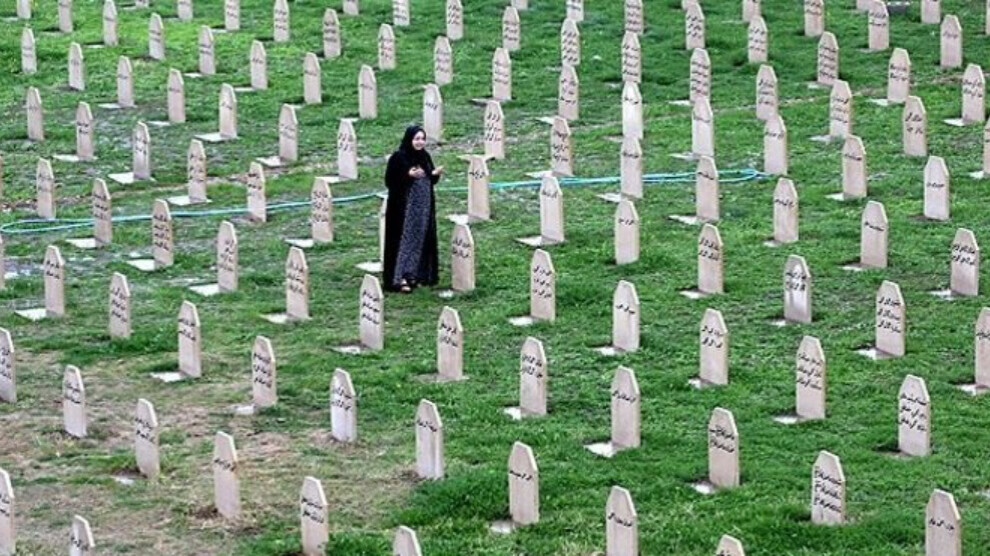Halabja Massacre: The wound in the hearts
35 years have passed since the Halabja Massacre, which left a black mark in history. Although 35 years have passed, there are still missing women and children.

News Center- On March 16, 1988, time stopped in Halabja. Within seconds, thousands of people were killed. Those who survived the massacre never forget this day.
The Iraqi Ba'athist government under Saddam Hussein carried out a massacre in the city of Halabja by using chemical weapons. In the attack, more than 5,000 people, including children and women were killed, tens of thousands were injured. The Halabja Massacre, known as the Hiroshima of the Middle East, is a great pain and wound in the history and the hearts of the Kurdish people. The smell of apples is deeply imprinted into the memory of the survivors of the massacre. The photos taken after the massacre show that when the bombs fell, some people were having breakfast, a woman was hugging her baby, another was smiling. All the photos show that the massacre took only several seconds. There are also photos showing how people fought a slow and painful death. 35 years have passed since this brutality, which plunged into the heart of the world like a dagger.
This attack was the last stage of the Anfal Campaign launched against Kurds by the Ba'athist regime led by Saddam Hussein between 1986 and 1989. According to reports, 182,000 Kurds were killed in the Anfal campaign, started on March 12, 1986 and ended on June 7, 1989. More than 4,500 villages and 30 districts were destroyed during the campaign.
Thousands were killed
Before the chemical attack, the Iraqi Air Force first dropped bombs on the houses in Halabja to break the windows, and then dropped chemical bombs on Halabja so that they would kill all people living in Halabja. The warplanes of the Iraqi Air Force dropped chemical bombs on Halabja with a population of 40,000 for five hours. The survivors of the massacre say that the chemical gas had the smell of apples. In the attack, more than 5,000 people, including children and women were killed, tens of thousands were injured. Some reports said the death toll of the massacre was 6,357. The report of the World Health Organization (WHO) said that more than 43,753 people were killed and more than 61,000 people were injured in the massacre.
In 2003, Saddam Hussein faced trial on charges of killing 180,000 in the Anfal Campaign. After being convicted of crimes against humanity for the Dujail massacre, he was executed by hanging in 2006. Saddam's cousin Ali Hassan al-Majid (who commanded Iraqi forces in northern Iraq during that period, which earned him a nickname of 'Chemical Ali') was condemned to death by hanging in 2010. On March 1, 2010, the Iraqi High Criminal Court recognized the Halabja massacre as an act of genocide against Kurds.
The effects of chemical weapons
Although 35 years have passed, the people of Halabja still suffer from the effects of the chemical weapons used in 1988. After the massacre, many women and children went missing. Some Iraqi documents also mention the missing women and children. On November 21, 2010, the Azadiya Welat newspaper released a very important document about the massacre. The confidential document written to the Iraqi Presidency by Iraqi military sources said the missing women of Halabja were transferred to the concentration camps and then to Arab countries to work in the prostitution sector. The document also included a list. According to the document, the missing women were sent to Egypt. There are still hundreds of missing women and children. Their families still look for them and call on the Iraqi government to find their relatives.
